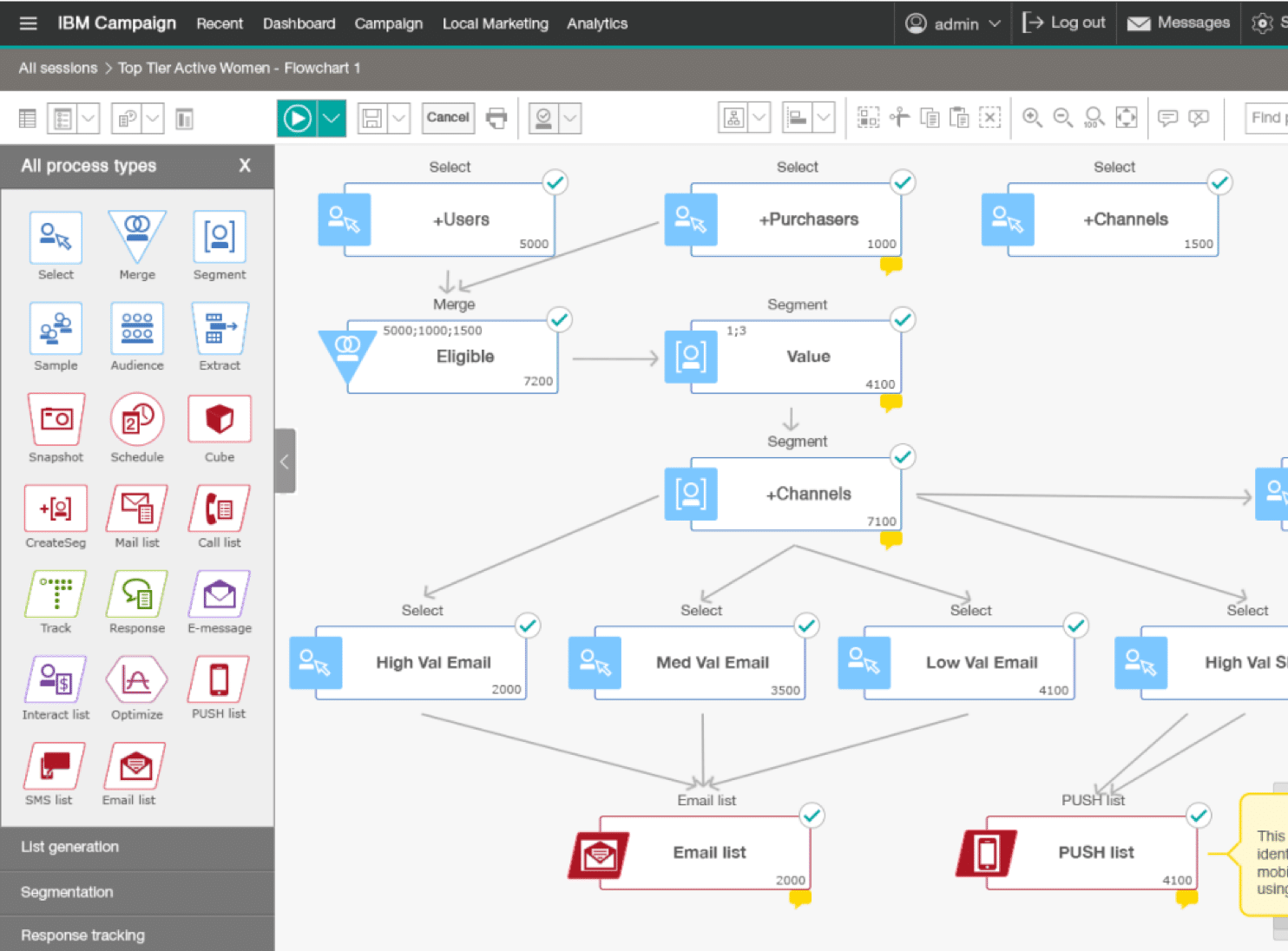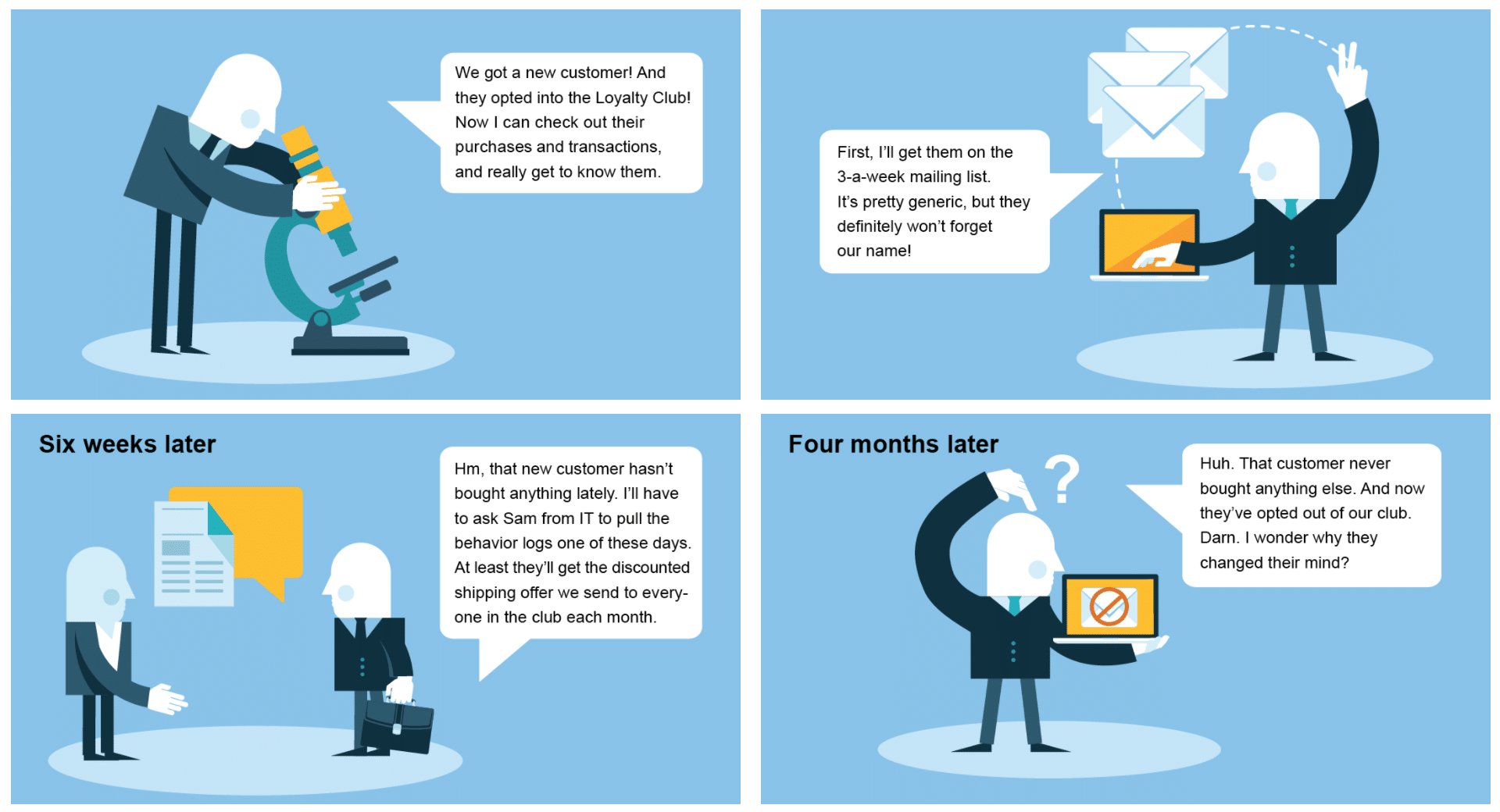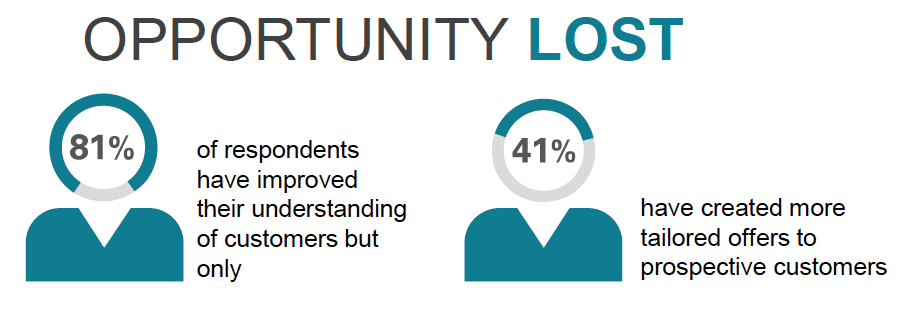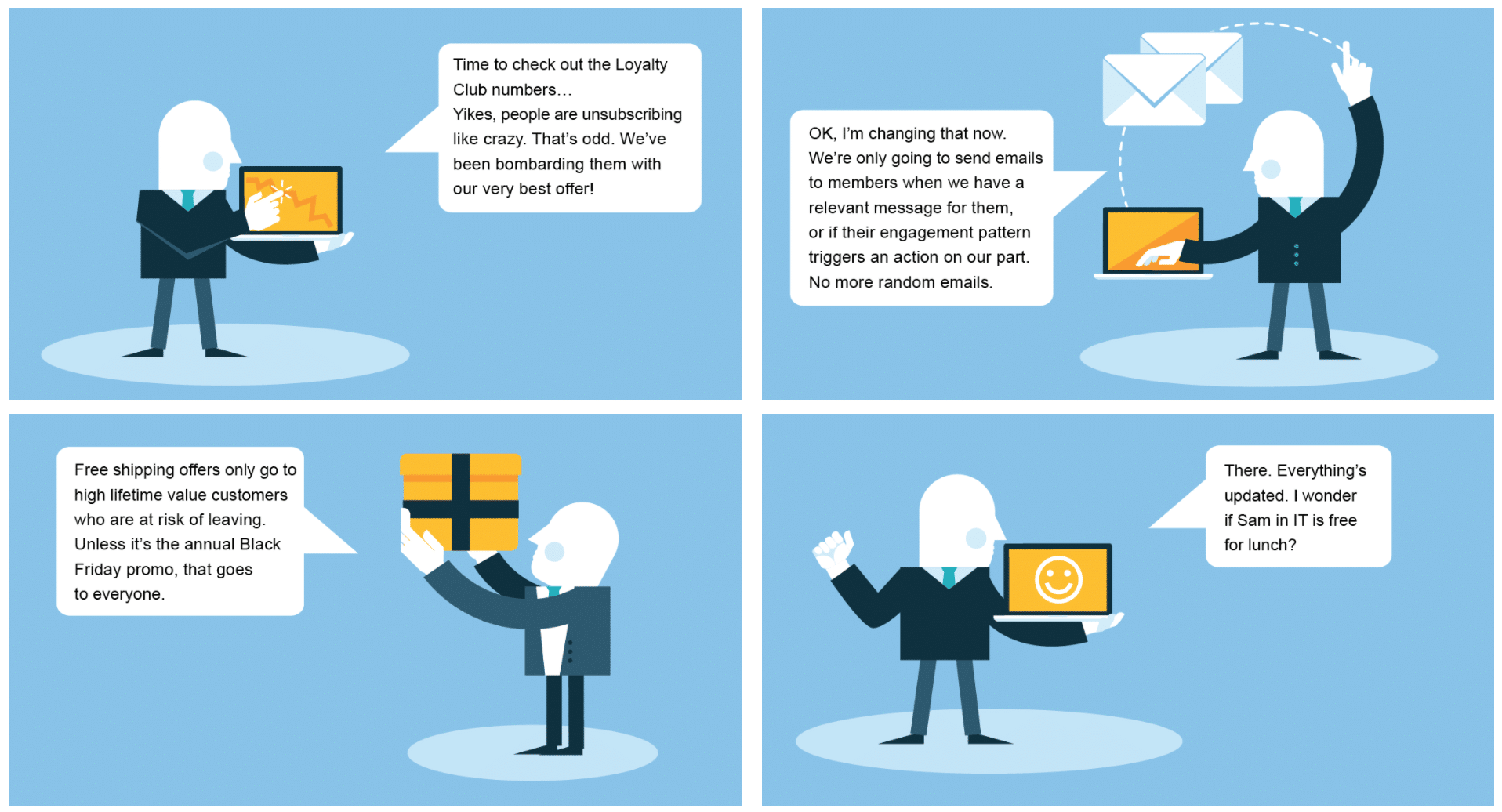In 2016 Gartner reported that: “Marketing technology spend is now higher than advertising spend for companies”. One of the main reasons I guess is a huge challenge for companies: finding the right customer (in the mass of data). It sometimes can feel like looking for a needle in a haystack. A phrase which may by the way originate from Cervantes’ Don Quixote – how fitting…
The journey into segmentation and targeting for me started back in 2010. I just joined the Casinos Austria group in Vienna as a Campaign Manager in the CRM (as in Customer Relationship Management) function. Unica Campaign was just being implemented and we had to grow our output dramatically to keep up with the business requirements over the next 5 years.
Over the next 3 years I was trying to move our segmentation efforts to a more automated approach. Sounds easy, but sometimes can be very hard. Let me give you an example: the Austrian Lottery (as part of the group) has lottery jackpots. They can grow from a single jackpot all the way to a quintuple jackpot with varying value. Obviously, no-one can predict the lottery. So they can hit the campaign management plan in the worst time – for instance when our online gaming company was releasing a brand new game.
You have to understand the Austrians’ approach to lottery gambling. Almost every Austrian plays the game once it hits the triple jackpot. When the quintuple (which always has been won so far – and hence never led to a sextuple) is on, every Austrian plays more or less three or more bids.
So how do you automate that? You probably start by getting database triggers to tell you when a jackpot is on and then automate it. You get personalisation data fed into emails and the website to adjust for the value of the jackpot sum. So far so easy. Just took us a couple of months back then to get everything into the right database tables.
But how do you make sure that you change who you speak to – depending on the sum and version of the jackpot? More people are interested in a quintuple jackpot than in a double (…). You have to create a variable segmentation based on variables, which can change each run based on people’s behaviours (did they play, were they interested in the past) and then broaden the scope of the selection accordingly. All of that automated. In a single campaign, as we could not rely on an external scheduler to decide between 1 to x versions of jackpots occurring. Hands free, no human interaction needed – as jackpots may appear out of the blue…
This is basically what we did and to this day – looking at a lot of IBM Campaign customers, I have not yet seen an automated campaign, which goes that far. Variable selection based on variables from top to bottom, replacing segments in a single campaign (which was very easy on the underlying automation).
So this is what I did back in 2013. However, there always was an issue. A key question: are you taking care of your most valuable customers?
When you focus a lot on automation and campaign management, it is not always easy to make sure you take care of every customer on their specific journey. When we did some research in 2013 at Casinos Austria we realised that we had quite some gaps in the campaign portfolio.
Ask yourself some simple question (or your campaign management colleague) and see what the answers are:
- How much did our customer base grow in the last day/week/month?
- How many customers in our top value segment did we not contact in the last day/week/month?
- How is the customer lifetime value progressing and who do we need to target based on these developments?
Great, if you have some BI reports on these questions, but my experience in the market is that a lot of campaign managers cannot answer these type of questions fast enough. Everybody is just too focused on building more of the same. There is no customer insights driven segmentation by campaign builders. Campaign managers often have to go to data analysts to understand their customer base. Otherwise of course they can build campaign processes to tell them some of the above answers, but not in a nice way – which is close to execution and let’s them choose right away, what they want to do with the possible segments behind my questions above.
Take this study by KPMG. Unbelievable numbers like: Only 14% of senior business executives think they have all the talent and capabilities they need to fully leverage data insights.
It is not the only study out there. The recruiting firm Hays has released their quarterly report (26 July 2017) on most ‘in demand’ jobs. Just read the opening paragraph: “Of the new jobs added to its Hays Quarterly Report of skills in demand, almost all require the knowledge and capabilities needed to utilise new emerging technologies and digital trends, from new systems to robotics, 3D printing to data analytics.”
My colleague Lara Loughran wrote a perfect paragraph on this issue: “We all know how difficult it is to find the perfect gift for someone you know. So, consider being tasked with finding the perfect gift for a total stranger. Seems almost impossible. What about for 1,000 total strangers? This is the challenge that marketers face every single day. Every day, they strive to make personalized connections with thousands or even millions of customers. And, once these connections are made, marketers are expected to maintain and grow these relationships. Customers are complicated and ever-changing. A customer may respond positively to a campaign for platform sneakers, and then be completely disinterested in shoes for the rest of the year. To form and deepen these bonds with customers, marketers need to understand and predict the changing individuality of each customer.” – I could not agree more.
Jeremy Waite makes the case for personification. In his words: “In 2017, you don’t need to know everything about everybody, you just need to know a few things about a LOT of people.”
Enter Watson. What, if you are executing on customer experience decisions at speed without relying on data scientists?
Let me introduce you to Watson Marketing Insights. It transforms your role as a marketer with the power of a system which understands, reasons, learns and interacts with you. Built for marketers, it removes a lot of the above mentioned dependencies on the data scientist.
Some of the value highlights are:
- Deepen your understanding of customers and predict behaviours to increase the success of targeted interactions
- Accelerate time to insight with prepackaged models that draw on extensive investments in cognitive analytics
- Simplify production and incorporation of new insights with an intuitive, visually appealing interface purpose-built for marketers
The goal of Watson Marketing Insights (short WMI) is to show the campaign builder insights into segments, which otherwise could have been neglected or overlooked.
WMI also tries to simplify the overview for the marketer. Take a look at this easy colour coded dashboard and the valuable insight it provides:
Before we bring the full power of Watson to play though, let’s start with 3 basics steps:
Step 1: Gather the right data
Every client I see starts with data issues as a key blocker to their move towards a more automated segmentation strategy. You can only segment the data you know. However, waiting for a perfect data set will be endless. Data is changing way too fast to wait. Take these simple metrics:
- 2.7 Zetabytes of data exist in the digital universe today.
- Facebook stores, accesses, and analyzes 30+ Petabytes of user generated data.
- Walmart handles more than 1 million customer transactions every hour, which is imported into databases estimated to contain more than 2.5 petabytes of data.
So focus on:
- Audience optimization
- Content optimiziation
- Yield optimization
- Channel optimization
All of this is possible with the data that you have. Optimise the data to gain better results, but start from where you are to achieve some form of success.
The following types of data is especially useful in creating a holistic, 360-degree view of the customer:
• Descriptive data: Self-declared information and demographics
• Behavioral data: Orders, transactions and other customer activity as recorded by the business
• Interaction data: Email, chat transcripts and records of calls between the business and customers
• Attitudinal data: Opinions, preferences, needs and desires; this data is often discovered through survey responses or by mining social media
Focus on what you have and add what you are missing over time.
Step 2: Use customer segmentation to interpret customer behavior and draw conclusions
Have a closer look at this 5 step primer for better segmentation. I consider this a very good and basic start to deliver better outcomes.
Step 3: Monitor, test, and optimize
No segmentation is static. You have to continuously change it and cater to shifts in your customers’ behaviours.
Once you have gone through these steps, Watson can help you automate the segment creation. Have a look at these two simple examples:
And we can further refine the audiences we have uncovered:
Here is another preview of where this may be going in the near future. AI powered insights for the marketer to focus on the right segment:
Looking back to my days as a campaign manager, I would have loved to be able to look at overviews like this in real time:
The power of WMI is not just the dashboard though. It also is a segmentation engine to directly drive to execution. With the out of the box connectors via IBM’s Universal Behaviour Exchange, existing solutions from IBM, like IBM Campaign and Watson Campaign Automation can directly receive triggers from WMI to deliver emails, sms or push messages. IBM Interact can also personalise the website, customise the call centre, etc…
So where can you start on your journey to better segmentation?
You probably already are on your journey toward customer centricity. You are already monitoring your customer data, analysing it and using it to make better decisions. Where do you go from here? Answer these questions:
- What are you trying to achieve with your customers?
- Who do you want to reach?
- How can you improve these tasks by better understanding your customer base when reaching out to your customers?
Talk to your campaign managers and understand what they need to make better decisions. I am sure you will find that having additional insights in the hands of your builders can be very very valuable. It would have saved me a lot of work in the past.
Well, I am not sure everybody will go for lunch with Sam, but I like the outcome of scenario below 😉
If you want to know more, visit: Data Driven and Digitally Savvy: The Rise of the New Marketing Organization
Some additional reading, if you are interested:
Maximize Customer Engagement with WMI













